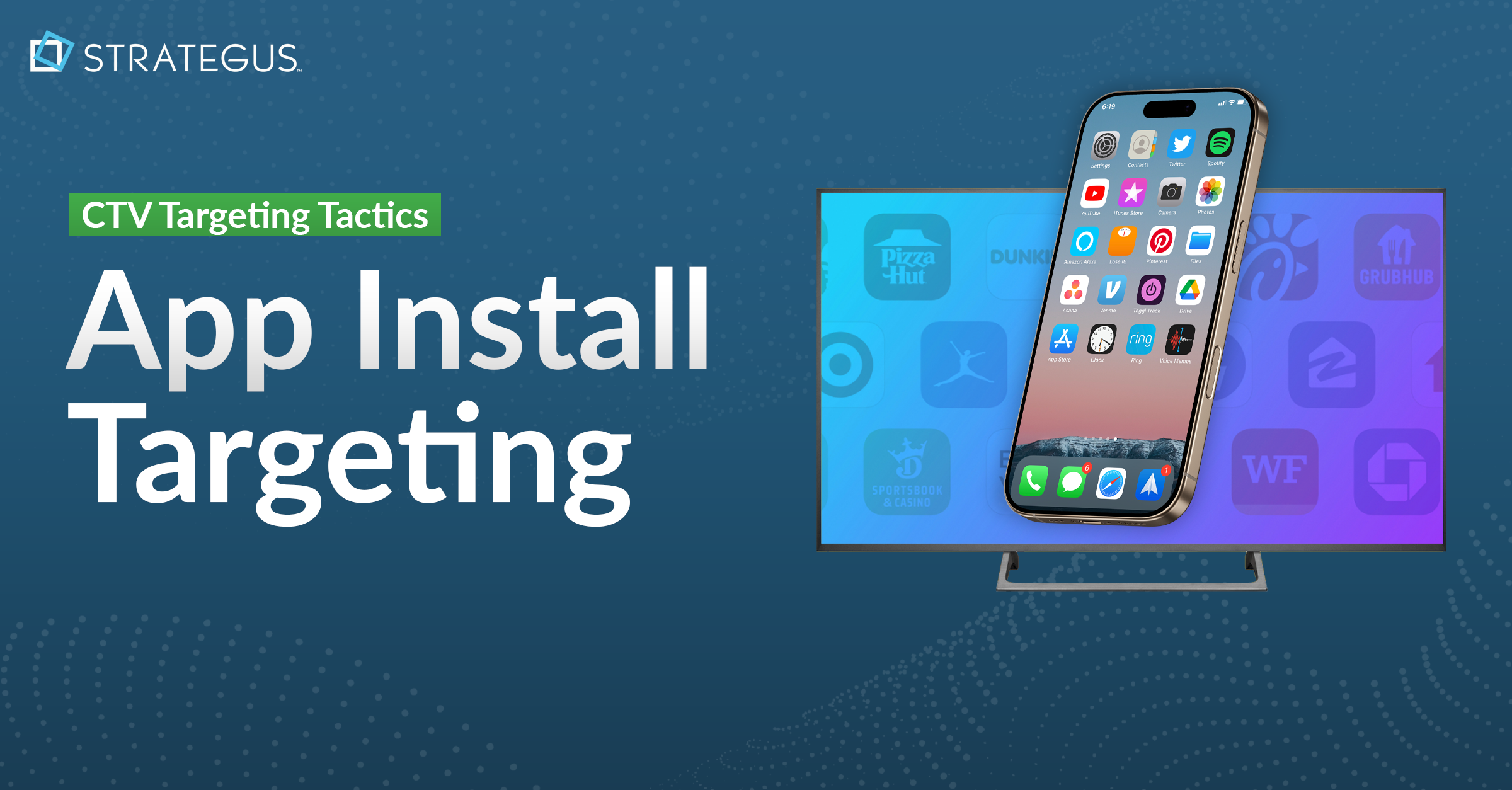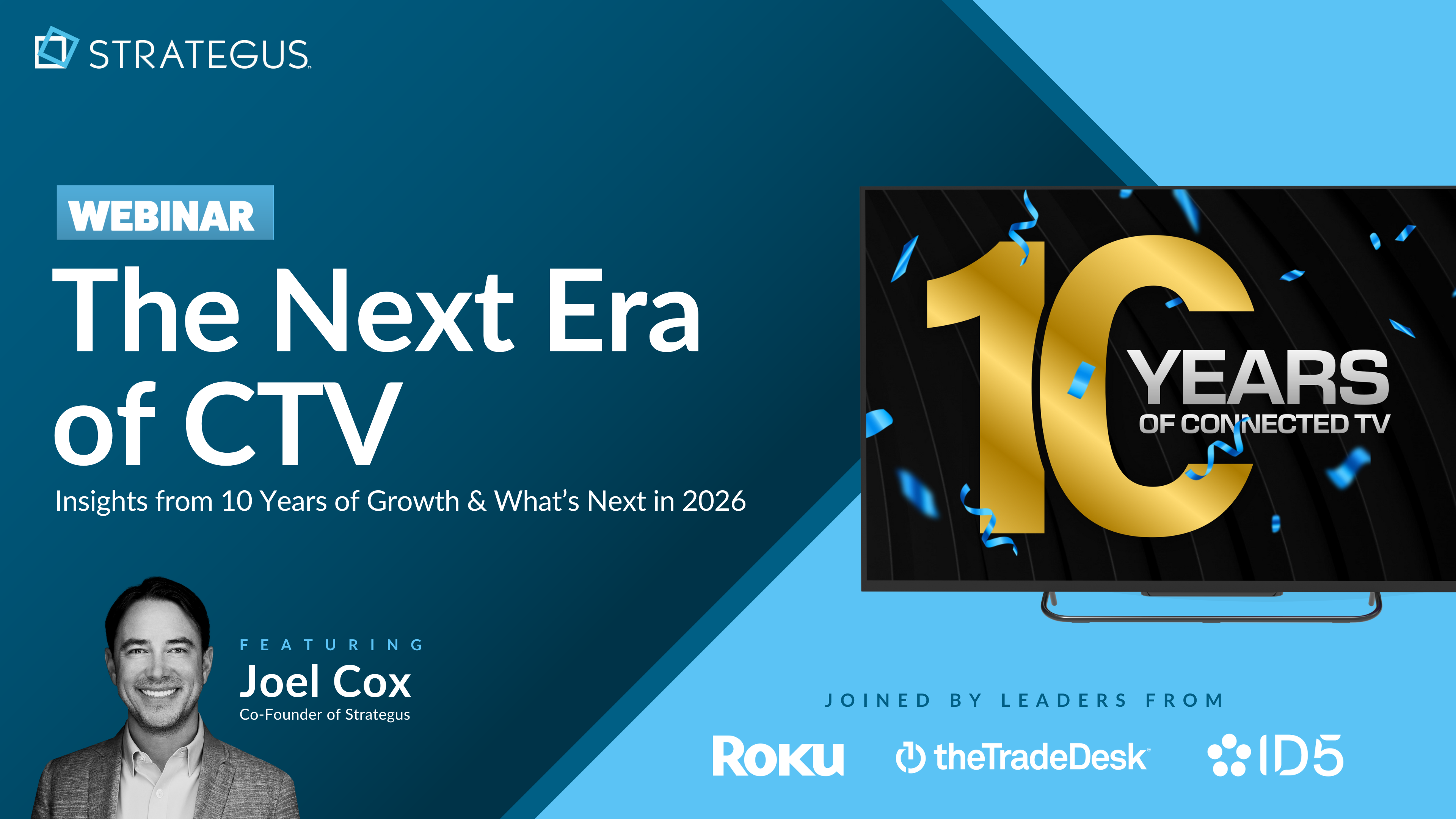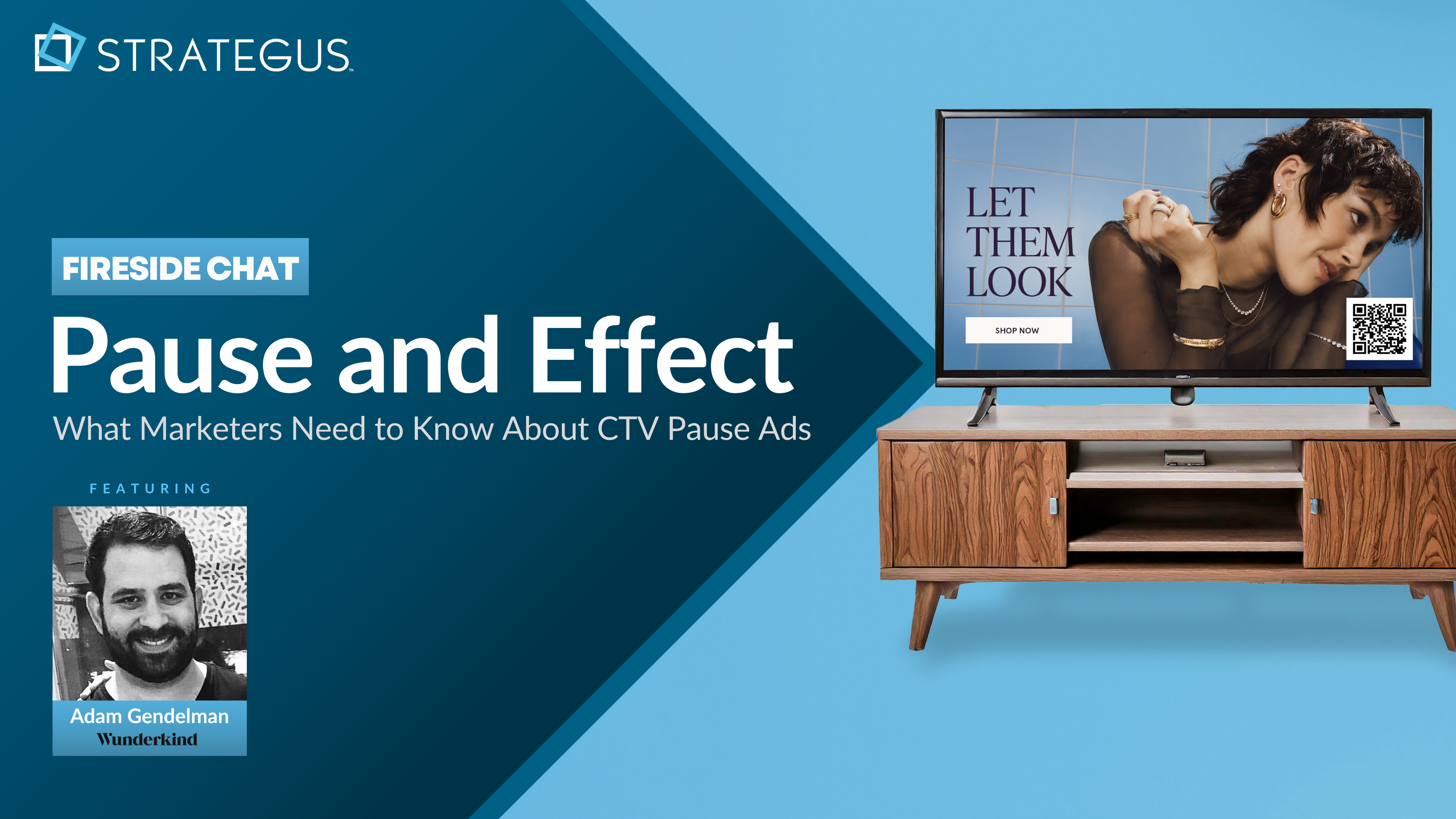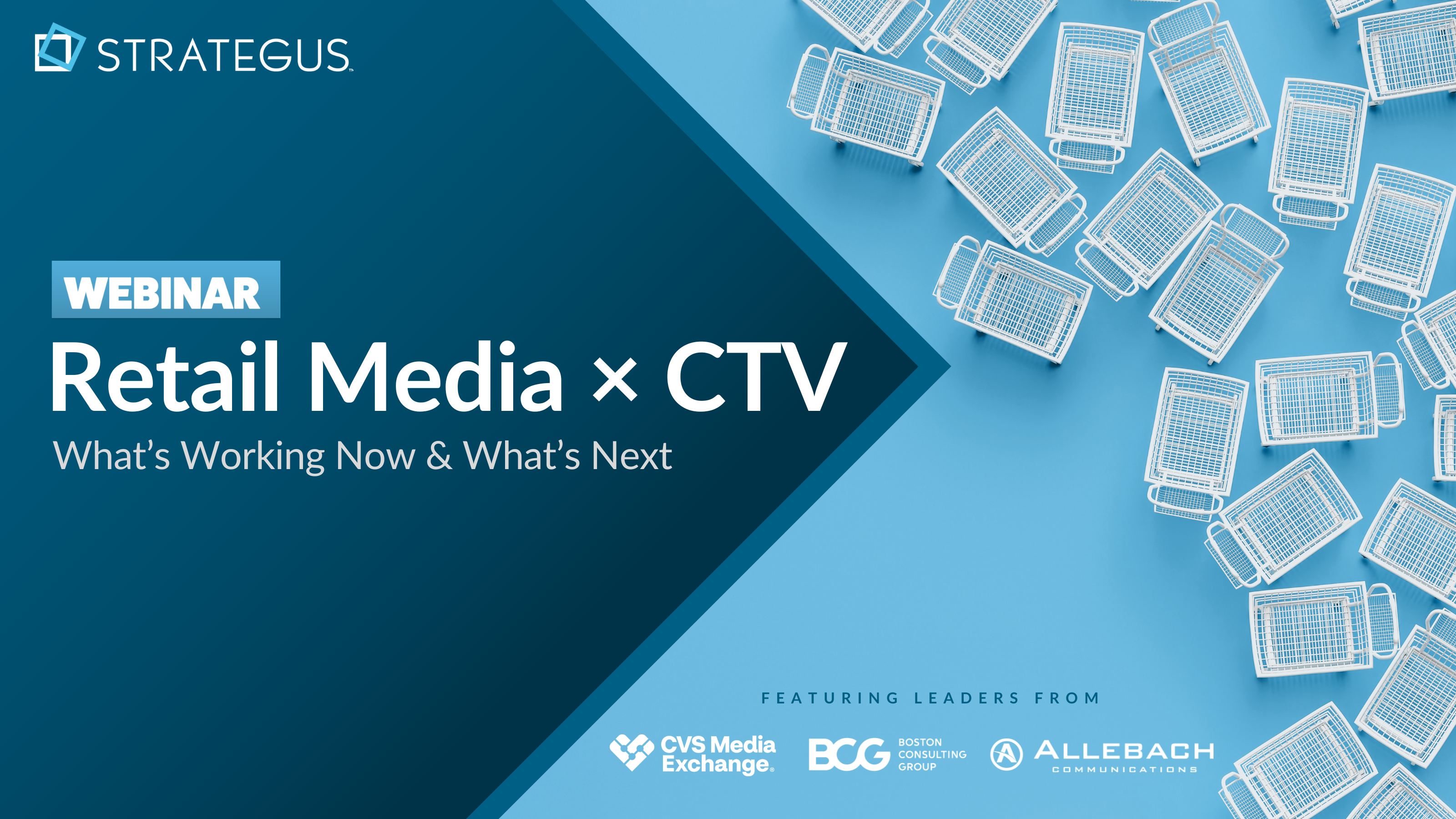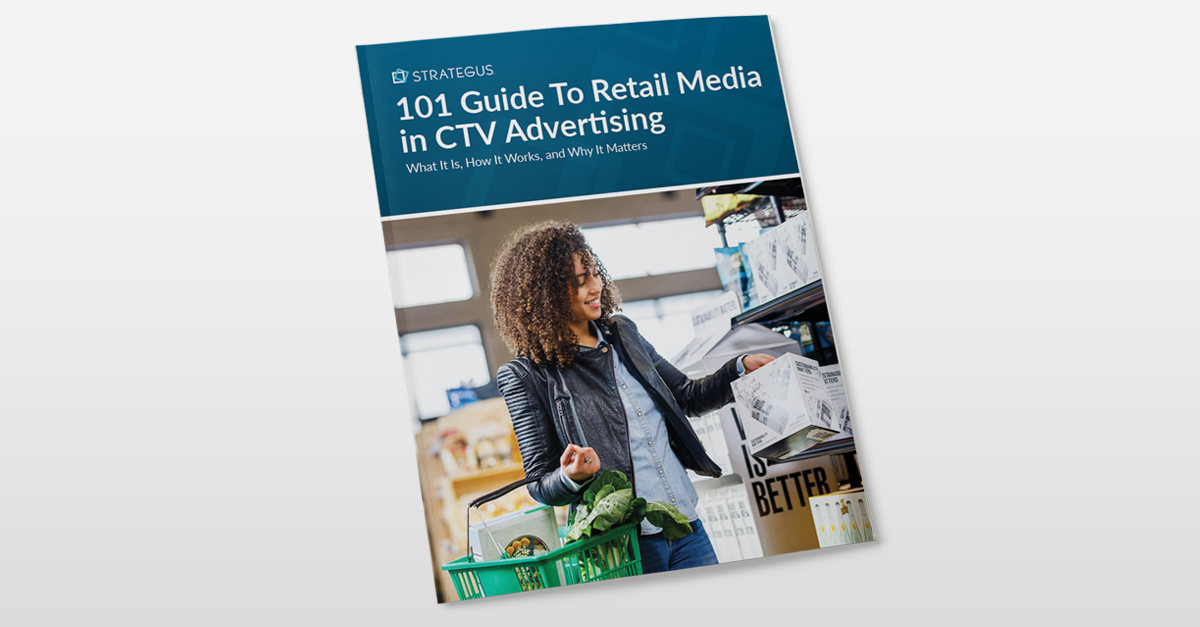- Home
- Strategus Blog
- What is DSP Advertising & How Demand-Side Platforms Work
What is DSP Advertising & How Demand-Side Platforms Work
10 minutes read
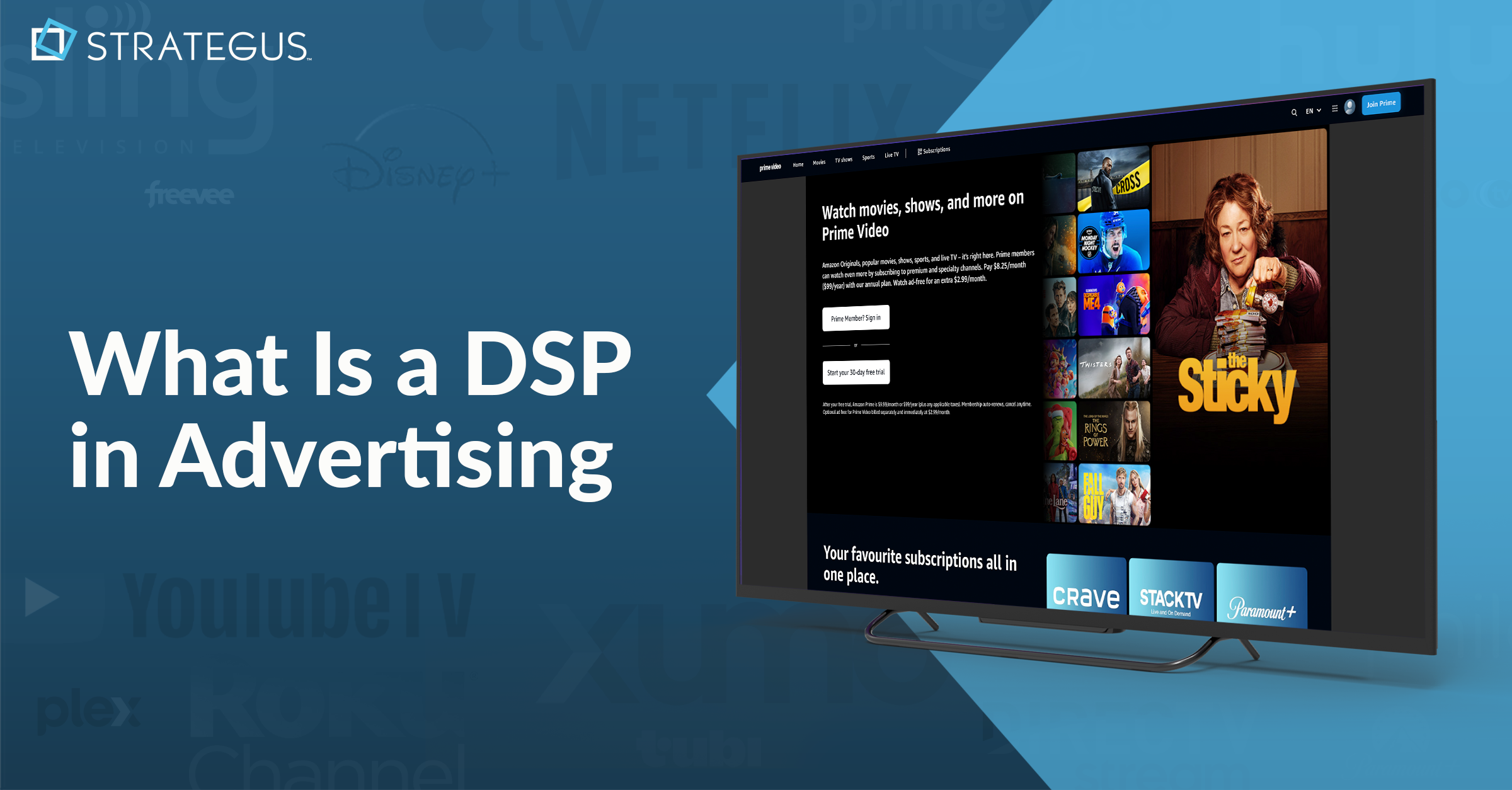
Struggling to manage ads across too many platforms and still not seeing results? DSP advertising can solve that.
This guide explains what a Demand-Side Platform is, how it works, and how it helps you run data-driven, high-performing campaigns across display, video, mobile, and CTV.
Key Takeaways
- A demand-side platform (DSP) automates cross-channel ad buying and optimization, centralizing campaign management, targeting, bidding, and real-time reporting across display, video, mobile, and CTV.
- DSPs connect to SSPs and ad exchanges; RTB evaluates each impression in milliseconds; the winning bid serves creative, then performance data feeds ongoing optimization.
- Benefits include automated bidding, broad inventory reach, precise demographic, behavioral, contextual targeting, and real-time budget shifts, especially valuable for high-impact connected TV and OTT campaigns.
- DSPs serve advertisers; SSPs serve publishers; self-service offers control but demands expertise, while managed service provides strategic execution, premium inventory access, and streamlined results.
- Ready to simplify programmatic and CTV performance with expert management, premium inventory, and transparent reporting? Speak to a Strategus expert today to launch smarter campaigns.
What is a Demand-Side Platform (DSP)?
A demand-side platform (DSP) is an advertising technology platform that enables advertisers to automate and optimize digital ad buying across multiple ad exchanges and networks.
It provides a centralized interface for advertisers to manage their ad campaigns, target specific audiences, and track performance metrics in real-time.
DSPs use sophisticated algorithms and data analytics to help advertisers make informed decisions about where to place their ads, how much to bid, and when to adjust their strategies.
By consolidating ad inventory from various sources, DSPs give advertisers access to a wide range of digital channels, including display, video, mobile, and connected TV.
Examples of DSPs
Some of the most well-known DSPs in the industry include:
- Google Display & Video 360 (DV360): Google's enterprise-level DSP, formerly known as DoubleClick Bid Manager, offers advanced targeting, real-time bidding, and cross-channel campaign management.
- The Trade Desk: An independent, self-service DSP that focuses on transparency and customization, allowing advertisers to optimize their campaigns across various channels and devices.
- Amazon Advertising: Amazon's DSP enables advertisers to programmatically buy display, video, and audio ads both on and off Amazon properties, using the company's vast user data for targeting.
- MediaMath: A pioneering DSP that emphasizes data-driven marketing and provides a range of tools for audience targeting, campaign optimization, and cross-device attribution.
How Do DSPs Work?
DSPs connect advertisers with ad exchanges and supply-side platforms (SSPs), which are digital marketplaces where publishers make their ad inventory available for purchase.
When a user visits a website or app, the publisher sends an ad request to their SSP, which then passes the request to connected ad exchanges.
The ad exchanges announce the available ad impressions to multiple DSPs, initiating a real-time bidding (RTB) auction.
Each DSP analyzes the impression based on the advertiser's pre-defined targeting criteria, such as demographics, interests, or browsing behavior, and decides whether to place a bid and at what price.
Here’s a detailed look at how DSP advertising works:
1. Real-Time Bidding (RTB)
RTB is the backbone of programmatic advertising and the primary way DSPs function. In the RTB process, DSPs compete with each other to win the ad impression, with the highest bidder securing the right to display their ad to the user.
This entire auction takes place within milliseconds, ensuring a seamless user experience.
DSPs use advanced algorithms and machine learning to optimize bidding strategies in real-time, considering factors like the advertiser's budget, campaign goals, and historical performance data.
This data-driven approach allows advertisers to make the most of their ad spend by targeting the right users at the right time and price.
2. Ad Delivery
Once a DSP wins the auction, its ad server delivers the ad creative to the user's device, displaying it on the publisher's website or app.
The DSP then tracks the ad's performance, collecting data on impressions, clicks, conversions, and other relevant metrics. This real-time data feedback loop lets advertisers continually refine their targeting, bidding, and creative strategies to optimize campaign performance.
DSPs often provide detailed reporting and analytics tools, giving advertisers granular insights into their campaigns and allowing them to make data-informed decisions.
Why Advertisers Should Use DSP
DSPs offer several advantages that streamline the advertising process, making them an attractive choice for businesses looking to optimize their digital ad campaigns.
1. Automated Bidding
One of the primary benefits of using a DSP is automated bidding. DSPs automate the bidding process, reducing the manual labor associated with ad buying. This automation allows advertisers to focus on strategy rather than execution, saving time and resources while ensuring optimal bid prices for each ad impression.
2. Broad Inventory Reach
By connecting to multiple SSPs and ad exchanges, DSPs provide access to a wide range of ad inventory across various publishers. This broad reach ensures advertisers can find the most relevant and effective placements for their ads, increasing the likelihood of reaching their target audience and achieving their campaign goals.
3. Advanced Targeting
DSPs offer advanced targeting capabilities, enabling advertisers to precisely target their desired audience based on demographic, behavioral, and contextual data.
This level of targeting granularity helps advertisers minimize ad waste and maximize the impact of their campaigns by reaching the right users at the right time with the right message.
For example, a DSP can target sports enthusiasts in a specific city using third-party data, ensuring the advertiser's message resonates with the most relevant audience.
4. Real-Time Optimization
With DSPs, campaigns can be adjusted in real-time, allowing advertisers to reallocate budgets to high-performing segments or pause underperforming ads. This flexibility leads to more efficient ad spend and better overall campaign results.
Real-time optimization is particularly valuable for fast-paced, dynamic campaigns, such as those running on connected TV (CTV) and over-the-top (OTT) platforms.
Some of the biggest advantages of programmatic advertising for OTT/CTV campaigns are improved targeting, increased reach, and improved measurability, all of which are made possible by the real-time capabilities of DSPs.
What Are the Key Components of a DSP?
DSPs are practically one complicated set of systems that work simultaneously to guarantee near instant ad buys for your brand. Here are some components working in the backend to bring your campaign to life:
- Ad Inventory Access: DSPs provide access to a wide range of digital ad inventory across multiple ad exchanges and publishers, allowing you to reach targeted audiences across websites, apps, and video platforms.
- Audience Targeting: This feature enables precise targeting by using factors like demographics, location, interests, behavior, and device type, ensuring your ads are shown to the most relevant users.
- Bidder: The bidder is a core component of a DSP, handling real-time bidding (RTB) for ad inventory. It automatically evaluates available ad impressions and submits bids based on your campaign objectives and budget.
- Ad Server: The DSP's ad server is responsible for delivering ads once a bid is won, managing the placement, tracking, and display of ads across various digital platforms.
- User Profiles: DSPs build and utilize user profiles, which aggregate data from various sources, including cookies and device IDs. This data helps DSPs target specific users based on browsing behavior, engagement history, and other personalized criteria.
- Real-Time Analytics and Reporting: DSPs provide real-time data and insights on campaign performance, such as impressions, clicks, conversions, and cost metrics, helping you optimize your campaigns on the fly.
- Bid Management: Automated bid management adjusts bids in real-time based on performance and budget constraints, ensuring efficient use of your ad spend while meeting campaign goals.
- Creative Management: DSPs allow for uploading, managing, and optimizing creative assets like display, video, and native ads, ensuring the right formats and messaging are used across different channels.
- Data Integration: DSPs integrate first-party, second-party, and third-party data to improve audience targeting and personalization. This includes CRM data, behavioral insights, and external data sources.
- Budget and Frequency Control: You can set budgets and frequency caps, ensuring your ads are served efficiently without overexposure, preventing wasted spend and improving audience engagement.
What is the Difference Between DSP and SSP?
Advertisers use demand-side platforms (DSP) to help organize ad-buying, whereas publishers use supply-side platforms (SSP) to automate the sale of their advertising space.
DSPs allow advertisers to purchase ad inventory across multiple ad exchanges and networks through a single interface. They provide features like audience targeting, real-time bidding, and campaign optimization to help advertisers maximize the efficiency and effectiveness of their ad spend.
On the other hand, SSPs help publishers manage their ad inventory and connect with multiple ad exchanges and DSPs. They help publishers optimize their ad revenue by ensuring their ad space is sold to the highest bidder while also providing tools for inventory management, price floor setting, and ad quality control.
Basically, DSPs and SSPs connect to different parts of the programmatic ecosystem, with DSPs serving the demand side (advertisers) and SSPs catering to the supply side (publishers).
However, both platforms work together to facilitate the automated buying and selling of digital ad inventory, making the process more efficient and data-driven.
Self-Service DSP vs. Managed Service: Which is Right for Your Business?
Ultimately, your business’s resources, expertise, and goals will determine whether to choose a self-service DSP or a managed service.
While self-service DSPs offer control and flexibility, they require significant in-house knowledge, time, and effort to operate effectively. Businesses without the proper team or programmatic advertising expertise can easily face challenges such as poor targeting, budget mismanagement, and underperforming campaigns.
On the other hand, managed services provide a superior solution for businesses looking to achieve optimal results without the complexities of running campaigns independently.
With a managed service, you gain access to experienced professionals who handle everything, from strategy and audience targeting to execution, optimization, and reporting.
This keeps your campaigns consistently refined and aligned with your goals, driving maximum return on investment.
Closing Thoughts — Launch Smarter Ad Campaigns With a Fully Managed DSP Partner
Running programmatic campaigns shouldn’t feel overwhelming. With Strategus, you get more than just a DSP. You get a full-service team that drives results while saving your time and budget.
Here’s what you get when you work with Strategus:
- Fully managed campaigns– no steep learning curve or extra hires needed
- Advanced audience targeting across CTV, video, mobile, and display
- Premium, non-skippable inventory through top ad exchanges and platforms
- Real-time optimization that automatically shifts budget to what’s working
- Transparent reporting so you can track performance and ROI at every step
Ready to scale your results and make your next campaign a success? Speak to a Strategus expert to learn more today.
Frequently Asked Questions
1. How Do DSPs Target Audiences?
DSPs target audiences using data like demographics, location, device type, interests, and online behavior. Advertisers set targeting rules, and the DSP uses real-time data and machine learning to deliver ads to the most relevant users. This approach helps brands reach people who are most likely to engage or convert.
2. How Does a DSP Measure Attribution?
DSPs measure attribution by tracking user actions after an ad impression. They collect data on views, clicks, conversions, and post-view behaviors. This helps advertisers connect campaign performance to outcomes like purchases or sign-ups. Many DSPs also support multi-touch attribution and integrate with third-party analytics platforms for deeper insights.
3. What Types of Ad Formats Can Be Managed Through a DSP?
DSPs can manage display, video, native, mobile, connected TV, audio, and even digital out-of-home formats. Advertisers choose the format based on campaign goals and audience behavior. The DSP then handles placement, bidding, and optimization for each format across supported inventory sources and platforms.
4. What Makes a DSP Effective For Connected TV (CTV) Advertising?
A DSP works well for CTV when it offers access to premium inventory, precise targeting, frequency controls, and cross-device tracking. It must support high-quality, non-skippable video placements and deliver insights tied to actions beyond the big screen, such as website visits or online purchases.
5. Can DSPs Be Integrated with Other Marketing Tools?
Yes, DSPs can integrate with CRMs, DMPs, CDPs, analytics platforms, and attribution tools. These integrations allow advertisers to use first-party data, retarget known users, and sync audiences across channels. This improves personalization, campaign consistency, and overall marketing efficiency across the funnel.
6. How Do DSPs Work With Real-Time Bidding (RTB)?
DSPs connect to ad exchanges that run RTB auctions for available ad inventory. When a user loads a page, the DSP receives an ad request, evaluates it against targeting rules, and places a bid. If the bid wins, the ad gets delivered within milliseconds.
7. What is the Difference Between a DSP and an Ad Exchange?
A DSP is used by advertisers to buy ad space, while an ad exchange is a digital marketplace where buyers and sellers trade inventory. The DSP bids on impressions offered by the exchange. The exchange connects multiple DSPs and SSPs to match the highest bidder with available inventory.
8. What Platforms Help Manage and Adjust Live Campaign Elements In Real Time?
DSPs like The Trade Desk, DV360, and Amazon DSP allow real-time campaign adjustments. Advertisers can pause or update creatives, shift budgets, change targeting, or analyze performance on the fly. These features give advertisers more control and flexibility to optimize outcomes while campaigns are active.
9. Why Should a DSP Integrate with Multiple Supply Sources?
Integrating with multiple supply sources gives a DSP access to more ad inventory and better pricing. This increases reach, competition, and transparency. It helps advertisers find quality placements, avoid high costs, and reach niche audiences across different publishers and platforms.
10. What is the Primary Benefit of the Real-Time Capabilities of a DSP in Programmatic Advertising?
The biggest benefit is real-time optimization. DSPs allow advertisers to adjust bids, creative, and targeting instantly based on performance data. This ensures better results, less budget waste, and faster scaling of successful tactics while cutting off underperforming ones quickly.
11. How Does Amazon DSP Connect Advertisers to First-Party And Third-Party Publishers?
Amazon DSP gives advertisers access to Amazon-owned sites like IMDb and Fire TV and connects to third-party publishers through integrated ad exchanges. This combination helps advertisers reach users across a wide ecosystem while using Amazon’s audience data for better targeting and attribution.
12. Is a Managed Service or Self-Service DSP Better for Small Teams?
Small teams often benefit more from a managed service DSP. It provides access to expert support, strategic guidance, and campaign execution without needing in-house programmatic skills. Self-service DSPs offer control but require more time, experience, and active management to drive strong results.
Strategus is a managed services connected TV(CTV) advertising agency with over 60,000+ campaigns delivered. Find out how our experts can extend your team and drive the result that matter most.
Talk to an Expert
Seeking a Custom CTV Strategy That Delivers?
What to read next
App Event Tracking: Tie Mobile App Activity to CTV Campaigns
Let’s say you’re running a CTV campaign for a personal finance app.
5 minutes read

Stop Guessing Who Your Audience Is — Let Their Apps Tell You
Connected TV (CTV) targeting often falls in one of two camps.
8 minutes read
See Who Bought After Your Ad + How Much They Spent
You can’t improve what you can’t measure. And for years, that’s been a major problem with TV advertising.
4 minutes read

First-Party Attribution: Match Ads to Sales With CRM Data
The value of first-party data continues to grow.
7 minutes read



